Delfino Noronha
'Prestimoso e benemérito macaense'
Delfino Noronha was a leading figure in the Portuguese community in Hong Kong for more than half a century, and blazed a trail that others would follow with determination. He was perhaps 20 when about 1844 he set up in Hong Kong what would eventually become the colony's leading printery, which he ran until his death in 1900.
It is likely that the Noronha family arrived in Macau from Goa in the early eighteenth century. By the 1830s, the family had been established in Macau for perhaps a century. Delfino was thirteen when his father died in 1837. He was sent to the well-regarded St. Joseph's College, which claimed royal patronage, as 'the Royal College of St. Joseph'. In 1831, it was described:
The priests belonging to this Royal College are all Europeans, men of exemplary conduct and benevolent dispositions, and are esteemed by the public not less for their virtues as for their talents. These Professors are six in number.[1]
However, St Joseph's had a precarious existence in the 1830s as British trade grew, to the detriment of old established Portuguese families such as the Noronhas. St Joseph's turned in these difficult years to a new form of training. With dwindling opportunities available, even to the sons of the elite of Macau, the Fathers adopted a new strategy that proved to be of cardinal significance for the future of the Portuguese community throughout the Far East. This was to acquire a disused printing press to train their students as printers. The idea that Portuguese people would ever engage in manual work in the Far East was out of the question, but the 'craft' of printing was a different matter. It followed that its practitioners would strive to ensure that their work was excellent. So it proved, and in the 1830s, a thorough grounding in the 'craft' of printing was given to the boys of St Joseph's through the work of an outstanding man, Fr Joaquim Gonçalves. Thus St. Joseph's College became the forerunner of technical training in the Far East.
It gave the boys the chance of a good career in a rapidly changing world. High standards were required by the British and American merchants from these technically educated boys who found ready employment in printeries in Canton in the 1830s, and a few years later in Hong Kong.
J.P. Braga, Noronha's grandson, told the story of their experience at St. Joseph's.
The explanation for the steady increase in the number of Portuguese compositors in Hongkong can be found in the fact that there had been a printing press at St. Joseph's College in Macao at which Portuguese lads were given training as compositors and printers. Some of the young type-setters upon completing their apprenticeship migrated to the neighbouring British colony as the demand there for men skilled in this class of work increased with the growth of the settlement.
The young Portuguese compositors trained at that institution were the ones who staffed the printing works not only of the British and American missionaries and other foreign printing establishments at Macao, Hongkong, Canton and other places, but also the composing rooms of Hongkong's newspaper offices for several decades.[2]
Delfino Noronha was fortunate to have a family who could set him up as an independent printer in the early days in Hong Kong. He was married in Macau, possibly in 1840 when he was sixteen and his bride, Umbelina Maria Basto, eighteen. Early marriages were common, and in the next 18 years, 10 children were born. As Delfino's sons grew up, some were taken into his business, and later became successful printers in Shanghai, Singapore and elsewhere in the Far East.
Delfino's move to Hong Kong was risky; his grandson observed, 'he dared to face the rigours of the climate and the social uncertainties of young Hongkong without the assurance of a fixed salary'.[3] Any Portuguese subject going to Hong Kong at that time was venturing into the unknown. Would he be able to make his way in this new British colony?
Noronha brought a small press with him from Macau and set up business in Hong Kong in Oswald's Terrace, Wellington St, where buildings were crowded close together and rents much cheaper than the Central Business District. He remained there for more than twenty years.
The earliest example of his work known to survive is the Hongkong Almanack for 1847. A modest booklet of 14 pages, it bears Noronha's name at the foot of the title page. Besides listing all the official establishments, the Almanack carefully listed all the non-Chinese adult population. Most were employees of the large English merchant houses, or of several European traders. The European staff of each firm was listed; they included 35 Portuguese.[4] Most of the British firms employed Portuguese staff, but never in managerial roles. This became a settled pattern both of employment and social stratification. The Portuguese clerks in the various merchants' offices were listed only in their place of employment. What came to be called the 'Portuguese clerk class' had already emerged by 1848.
The Noronha family had a significant role in the business history of Hong Kong for several generations, the printery being still in family ownership in 1941, when the Japanese Occupation brought all European business activity to a sudden end.
Delfino produced work of a high standard. An example of his early work is striking proof of this. It is a theatre programme printed on silk in 1849. It indicates skill in dealing with a difficult medium and it reveals that the printer had a good press and an extensive range of font and other devices available to him. He was in a position to compete for the top end of the colony's business.
His name is in the margin at the bottom.
Source: Charlotte du Rietz Rare Books, Stockholm.
His grandson's memoirs provide an insight into Noronha's work practices:
Mr Noronha was himself an expert compositor. Until his business justified the larger staff which he came to employ in later years ... he would often set up the type himself for the more important of his publications. Nor is it generally known that in the first years his wife used to help with the inking and the working of the printing press, thereby proving herself to be a true woman pioneer who was willing to share the hardships and the work of the men who ventured forth into new fields of endeavour.
By dint of hard work and thrift ... Mr Delfino Noronha brought up a large family of children and grandchildren and built up a prosperous business.[5]
At first, Noronha had three competitors, Andrew Shortrede, John Carr and John Cairns. For Noronha to compete with these three was courageous and daunting. They were well-established and well-known in the small community. In the three or four years since they set up their businesses, it had become established that in the printing industry the Portuguese were employees, not proprietors. There would scarcely have been room for another printer, and Noronha struggled for some years to gain a foothold in the limited market.
Yet within 15 years, Noronha had proved himself the best of the four. Shortrede, a peppery Scot, had troubled relations with several early governors.[6] By contrast, the able young Portuguese printer, with a workforce comprising his own compatriots, was an attractive alternative to the incoming governor, Sir Hercules Robinson, in 1859. It must have given Noronha immense satisfaction to sign this memorandum:
Memorandum of agreement between H.E. Sir Hercules Robinson, Governor of Hong Kong and Delfino Noronha, printer: Delfino Noronha agrees to carry out printing etc. for the Hong Kong Government including the publishing of a separate sheet or sheets called 'the Hong Kong Government Gazette' and shall be at his liberty to insert advertisements in such gazette.[7]
The government contract gave Noronha public standing as well as assured business. As the writer of an obituary expressed it on Noronha's death in 1900, 'the printing business of Mr. Noronha continued to prosper and [became] the most important in the colony.'[8] A family tradition was that Robinson's successor, Sir Richard MacDonnell, assured Noronha that so long as his firm continued to give satisfaction, they would remain government printers in perpetuum.[9]
He continued to use the business name, 'Noronha's Printing Office', but by 1867, it had become 'Noronha & Sons, printers to Hongkong Government', or 'Noronha e Filhos' for Portuguese publications. By 1874, the name 'Noronha & Co' had been adopted, and the firm would continue under this name until 1941. A disastrous fire on 30 October 1866 nearly destroyed the business. However in 1900, his obituary stated, 'Mr. Noronha was able to minimize his losses and create a better establishment that remains the best up to today with no other firm able to surpass it'.[10]
Image from the Illustrated London News, 22 December 1866.
For some years between the 1860s and the 1880s his sons Henrique and Leonardo were in the business. In 1870 he employed six others, all Portuguese. Having had excellent training himself, Noronha was now training the next generation of printers. Over the years, some of his sons went to Canton, Shanghai, Manila and Singapore, where their father assisted them to launch out on their own, as he himself had done.
At least one grandson joined the firm, J.P. Braga, who had the opportunity of observing his grandfather closely. He found, not only a busy and successful printery in which high standards were expected, but also a centre of intellectual activity. He could see and emulate the personal qualities that had made the older man a successful businessman and a respected community leader. Nearly half a century later, he wrote,
Of him I cherish fond memories, with his gentle ways and courteous manners. He was small and slight, and was always immaculately dressed, and he was my ideal of a perfect gentleman. He was popular not only in Hongkong but he also enjoyed a wide circle of Macao friends.[11]
As a significant community leader, Noronha was one of the founders of the Portuguese community club, Club Lusitano, in 1865, and a benefactor of the new Catholic cathedral in 1888.
The cathedral has twenty pillars. Each bears a marble tablet with the name of a significant benefactor.
Photo taken by the author.
In the eyes of Austin Coates, Noronha was the outstanding figure in his community.[12] His business success enabled him to invest in property. This included rural land in Kowloon on the north side of Hong Kong harbour. Added to the colony of Hong Kong in 1860, it remained unoccupied by Europeans for some years. Noronha was a co-founder of the Hongkong Horticultural Society,[13] and developed a ten acre estate at Yaumati, on the western side of Kowloon. However, the estate was not retained by his heirs; it would now be worth an astronomical amount. To the Portuguese community, he was 'Prestimoso e benemérito macaense' - 'the most prestigious and benevolent Macanese'.[14]
The very faded original from Olive Braga's album has been expertly enhanced by António Jorge da Silva.
24 February 1900
Happy Valley, Hong Kong.
Photo taken by the author.
Noronha died at the age of 75 on 6 February 1900, and was buried in the Roman Catholic Cemetery, Happy Valley, next to his wife, who had predeceased him in 1894. A fluted column was raised over the grave, an apt metaphor for strength and continuity. Noronha was among a small group of Portuguese immigrants to become high achievers. His obituary, published in O Porvir (the Future), a Portuguese community weekly, was apparently written by one of his sons. Referring to Delfino's family, the writer noted:
Delfino de Noronha was a true patriarch and in his life was fortunate to share his life with 10 children, 59 grandchildren and 35 great-grandchildren, with 8 children, 48 grandchildren and 27 great-grandchildren living at the time of his death.[15]
Noronha's achievement, like that of several other heads of eminent families, was based on unflagging personal drive, a passion for excellence, and a strong sense of public duty. His place in the Portuguese community in Hong Kong was that of a patriarch both in his family and the Portuguese community he had done much to support.
Stuart Braga, great-great grandson of Delfino Noronha.
Last revised, 9 March 2023
References:
- Anders Ljungstedt, in Canton Miscellany, no. 5, 1831, p. 358.
- J.P. Braga, The Portuguese in Hongkong and China, p. 131.
- J.P. Braga, The Portuguese in Hongkong and China, p. 128.
- S. Bard, Traders of Hong Kong: some foreign merchant houses, 1841-1899, p. 106.
- J.P. Braga, The Portuguese in Hongkong and China, p. 129.
- G.B. Endacott, A Biographical Sketchbook of Early Hong Kong, pp. 150-151.
- HKRS 149-2-133 and HKRS 149-2-216, both 10 December 1859, Public Records Office, Hong Kong.
- An unsigned obituary in the Portuguese weekly, O Porvir, Hong Kong, 24 February 1900, possibly written by his son Henrique.
- J.P. Braga, The Portuguese in Hongkong and China, p. 151.
- O Porvir, Hong Kong, 24 February 1900.
- J.P. Braga, The Portuguese in Hongkong and China, p. 129.
- A. Coates, 'Rizal in Hongkong', 1962, p. 288.
- J.P. Braga, The Portuguese in Hongkong and China, p. 229.
- From an obituary in O Porvir (The Future), 24 February 1900.
- O Porvir, 24 February 1900.
Related pages on Gwulo:
- Delmar [c.1870-????], Delfino Noronha's estate in Yau Ma Tei
- Noronha & Co. [????-????], his printing company
- José Pedro BRAGA (aka JP) [1871-1944], his grandson
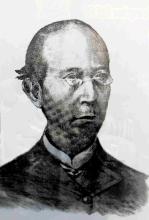
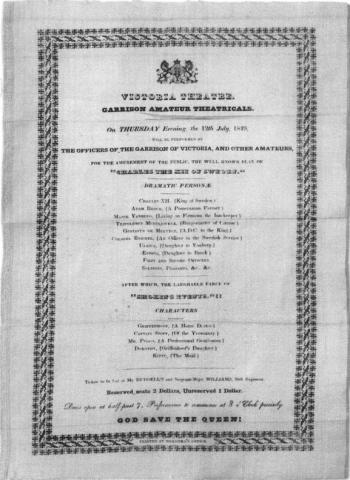
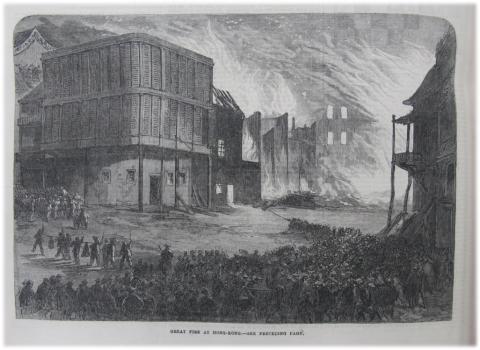
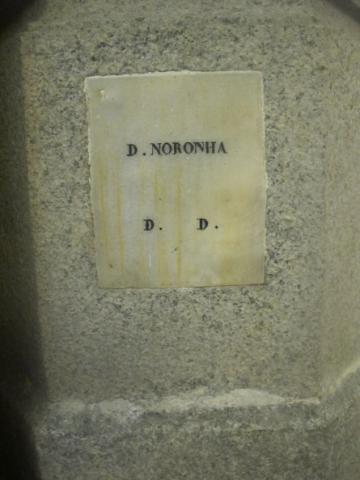
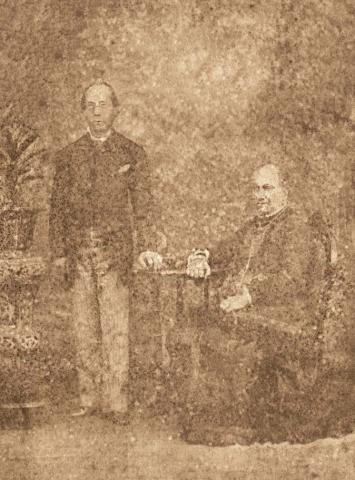
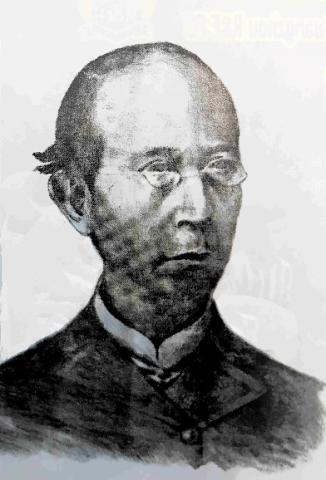
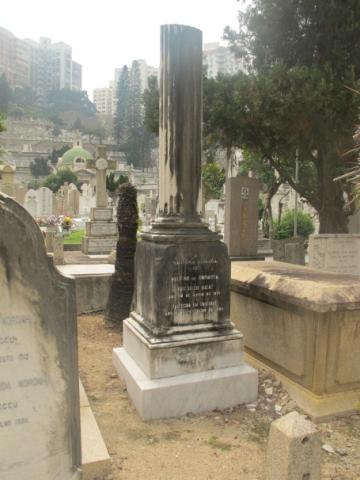
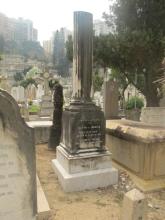

Comments
My great great grandfather
This is my great great grandfather on the maternal side. Is the photo definitely accurate? There is a misrepresentation floating around and I think, but cannot be sure without checking my records, that that is incorrect.
Delfino Noronha
The 1900 illustration accompanies the obituary in 'O Porvir'. The article on Noronha in the first edition of Jorge Forjaz, 'Familias Macaenses' is accompanied by a photograph said to be of Delfino Noronha in a family group. However, this is likely to be of his son Carlos (Charlie) and his wife Corunna (née Pollard) with members of the Agabeg family. The photograph in the album of Olive Braga, wife of J.P. Braga, Noronha's grandson is clearly of the same person as the 'O Porvir' illustration. No other photographs have so far come to light.